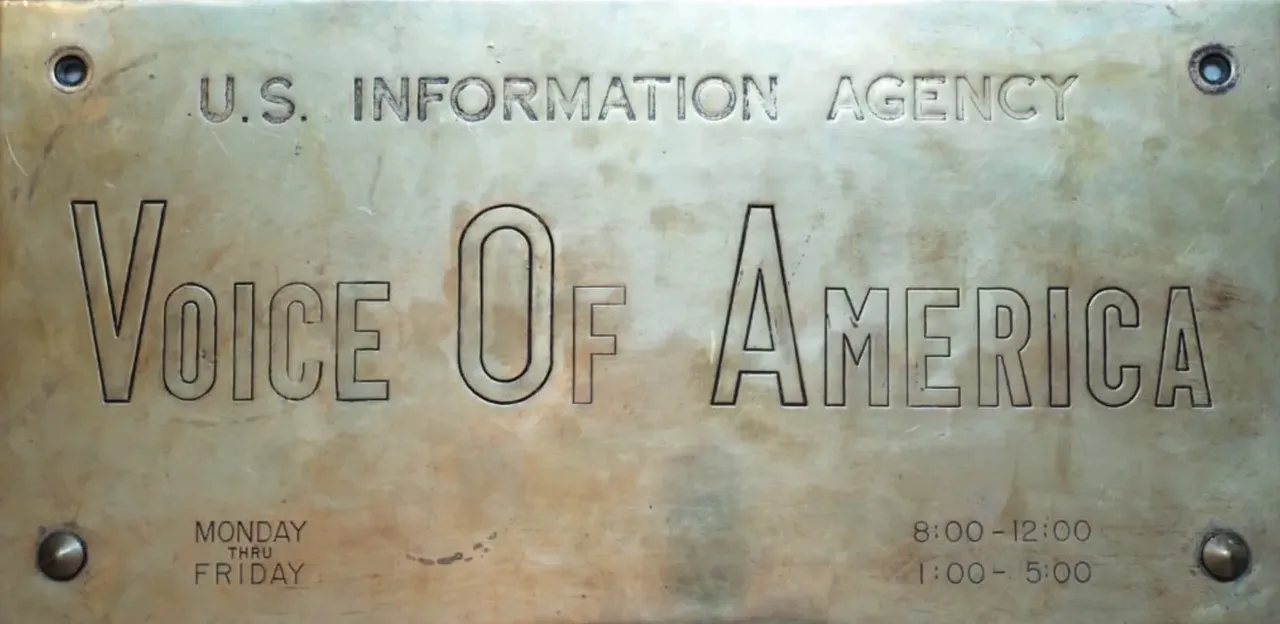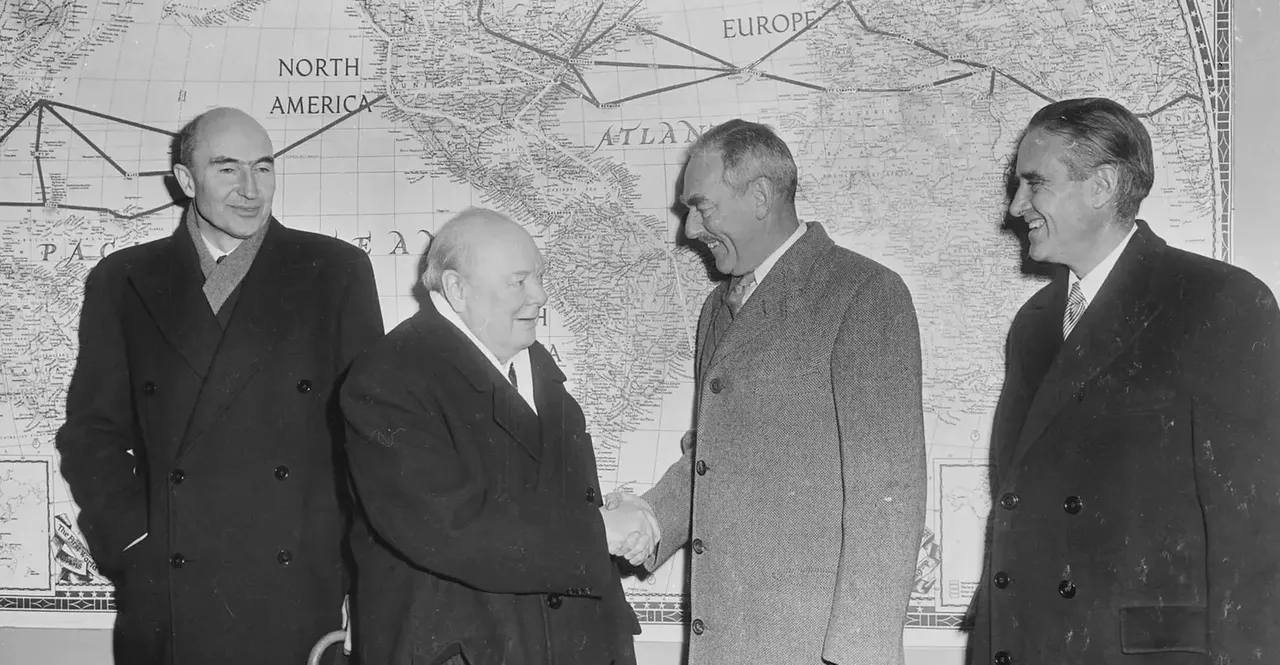Synopsis
The United States Information Agency (USIA) was a significant entity in American public diplomacy during the Cold War, promoting American values and policies globally. Established in 1953, it utilized various mediums such as the Voice of America to counter state-controlled media in communist countries. While criticized for propaganda, its initiatives aimed to foster understanding and goodwill. Despite its dissolution in 1999, its legacy of strategic communication and public diplomacy remains relevant. Current challenges in countering misinformation suggest the need for lessons from USIA's history, emphasizing proactive and integrated approaches within broader foreign policy objectives.
Treatment
A Historical Perspective
In the realm of global communication and influence, few entities have held as much sway as the United States Information Agency (USIA). Established in 1953, the USIA played a crucial role in disseminating American culture, values, and policies to audiences around the world during the Cold War era. However, its legacy extends beyond mere propaganda; it represents a nuanced approach to public diplomacy and strategic communication.
The USIA's mandate was to inform, engage, and influence international audiences in support of U.S. foreign policy objectives. It operated through various media channels, including radio broadcasts, publications, cultural exchanges, and educational programs. One of its most iconic tools was the Voice of America (VOA), which broadcasted news, features, and commentary in multiple languages to provide an alternative to state-controlled media in communist countries.
At its core, the USIA embodied the concept of "soft power," leveraging the appeal of American culture, democracy, and freedom to win hearts and minds abroad. Its initiatives ranged from sponsoring art exhibitions and educational exchanges to producing documentaries and distributing literature. By showcasing the richness and diversity of American life, the agency aimed to foster goodwill and understanding among foreign populations.
However, the USIA's activities were not without controversy. Critics often accused it of engaging in propaganda and manipulating information to serve U.S. interests. Indeed, the distinction between "white propaganda" (truthful information) and "black propaganda" (misinformation) was a recurring theme in discussions about the agency's methods. Yet, proponents argued that the USIA's efforts were essential for countering hostile narratives and promoting democratic ideals in regions where freedom of expression was suppressed.
One of the most notable initiatives that compares to mission of the USIA's purview was the World War II "Why We Fight" series, which was commissioned by the U.S. Army during the war to boost morale, as well as motivating US citizens to recognize what was at stake, and their importance in supporting US efforts. Produced by renowned filmmakers like Frank Capra, these documentaries aimed to rally support for the war effort by explaining the principles and motivations behind America's involvement in the conflict. The series not only informed but also inspired audiences both at home and abroad.
Another service provided by the USIA was Voice of America. Broadcasting wia both radio, and later television, it became a widely received source of news on global events, from the US perspective, of course, throughout the world, often becoming the only access to news of world events that informed those living in Communist nations could possess. Today, VOA even has it’s own YouTube channel.
The United States Information Agency (USIA) was established August 1953.
In April 1978, the agency name was temporarily changed to the International Communication Agency (USICA), when its functions were consolidated with those of the Bureau of Educational and Cultural Affairs of the Department of State. The name was restored to USIA however in August of 1982.
USIA’s basic legislative mandates are the Smith-Mundt Act of 1948 and the Fulbright-Hays Act of 1961. The International Broadcasting Act of 1994 reorganized and consolidated all non-military U.S. government international broadcasting into USIA, supervised by the Broadcasting Board of Governors.
Until 1999, the USIA functioned as an independent foreign affairs agency within the executive branch of the U.S. government. USIA explained and supported American foreign policy and promoted U.S. national interests through a wide range of overseas information programs. The agency also promoted mutual understanding between the United States and other nations by conducting educational and cultural activities.
Pursuant to the Foreign Affairs Reform and Restructuring Act of 1998, USIA was integrated into the Department of State on October 1, 1999.
Throughout its existence, the USIA underwent several transformations and faced budget cuts and restructuring efforts. In 1999, it was officially abolished, and its functions were integrated into the newly established Bureau of Public Affairs within the Department of State. Nevertheless, its legacy lives on in the principles of public diplomacy and strategic communication, which remain vital tools in shaping international perceptions and advancing American interests.
One of the USIA's most illustrious directors was Edward R. Murrow, a pioneering journalist and broadcaster known for his incisive reporting during World War II and the Cold War. Murrow's leadership brought credibility and professionalism to the agency, elevating its stature both at home and abroad.

The Rise and Fall of the United States Information Agency
The United States Information Agency (USIA) was an independent executive agency responsible for American public diplomacy, particularly during the Cold War era. Its mission was to understand, inform, and influence foreign publics in support of the national interest and to foster dialogue between Americans and international counterparts. USIA operated through various functions, including advocating U.S. policies abroad, providing information about American values and institutions, facilitating international engagement for American citizens and institutions, and advising policymakers on the impact of foreign attitudes on U.S. policies.
Legislatively, USIA emerged from the Smith-Mundt Act of 1948 and was formally established by Executive Order 10477 in 1953. It faced legislative changes over the years, including amendments such as the Zorinsky Amendment in 1985, which prohibited domestic dissemination of its foreign message to American citizens. Eventually, USIA was dissolved in 1999 under the Foreign Affairs Reform and Restructuring Act, with its duties divided between the State Department and the Broadcasting Board of Governors.
USIA employed a diverse workforce, including Americans, Foreign Service Nationals, and domestically-based civil servants, with personnel stationed both domestically and abroad. Following its dissolution, USIA's responsibilities were absorbed by other entities, such as the State Department's Public Diplomacy & Public Affairs office and the Broadcasting Board of Governors, which oversees international broadcasting efforts including Voice of America (VOA). VOA continues to disseminate objective news reports aimed at foreign audiences, promoting American values and ideals globally.

Why USIA Myths are Holding Back Real Solutions?
Explore the hidden secrets of US information policy and its impact on global affairs, from the failures of the US Information Agency to potential pathways for revitalization, emphasizing the need for strategic leadership and integration to counter misinformation and shape narratives in today's interconnected world.
In today's interconnected world, the battle for hearts and minds is increasingly waged in the realm of information. Misinformation and disinformation campaigns, often orchestrated by adversarial nations, pose significant challenges to US foreign policy objectives. As the United States grapples with these evolving threats, it is crucial to draw lessons from history to inform effective strategies for the future.
The dismantling of the US Information Agency (USIA) in 1999, once considered the cornerstone of America's public diplomacy efforts, serves as a cautionary tale. While USIA played a vital role during the Cold War, its marginalization and lack of integration with broader foreign policy objectives ultimately undermined its effectiveness. Despite calls for its revival, simply resurrecting USIA may not address the complexities of modern information warfare.
To understand a path forward, we must look back to earlier models that successfully navigated similar challenges. One such example is the International Information Administration (IIA), established in 1952 under Secretary of State Dean Acheson. Unlike USIA, IIA operated within the State Department, allowing for greater coordination with foreign policy goals. Its comprehensive approach encompassed educational and cultural exchanges, as well as direct support for building local capacity abroad.
However, despite initial success, IIA's demise after just over a year highlights the need for sustained political commitment and leadership. The Eisenhower administration's decision to replace IIA with USIA was driven by bureaucratic reshuffling rather than a strategic vision. The result was an agency with limited authority and diminished integration with foreign policy objectives. Later, President John F. Kennedy appointed the esteemed and respected journalist, Edward Murrow, which added legitimacy to its role in purveying indisputable truths to the world. An interesting history of the USIA and its mission can be found here: What was USIA?: Overview, Mission, Structure
Today, as the United States confronts unprecedented challenges in the information domain, there are two potential paths forward. The first involves revitalizing the State Department to incorporate functions similar to those of IIA, with a renamed Under Secretary for Public Diplomacy and Public Affairs at the helm. This approach would prioritize coordination and integration with broader foreign policy objectives while leveraging existing diplomatic infrastructure.
Alternatively, the United States could establish an independent cabinet-level agency dedicated to coordinating information efforts. Modeled after the vision of IIA, this agency would have a clear mandate to counter misinformation, promote American values, and build partnerships abroad. Importantly, it would require strong leadership and institutional support to navigate bureaucratic hurdles and ensure effective implementation.
Whichever path is chosen, it is essential to recognize that success in the information domain requires more than just reactive measures. It demands a proactive and comprehensive approach that integrates information efforts with broader foreign policy objectives. This means investing in cultural understanding, supporting independent media, and empowering local communities to counter misinformation from within.
Furthermore, any new initiative must be adaptable and responsive to counter emerging threats. As technology evolves and adversaries employ increasingly sophisticated tactics, US information policy must remain agile and forward-thinking. This requires ongoing investment in research, innovation, and strategic partnerships to stay ahead of the curve.
Some may assert that the US has no role in propagating “propaganda”. However, when one’s ideals are worthy, and intent on spreading actual, indisputable truths, there must be a a mechanism in place to accomplish that purpose. And it must be accountable to the people, the Constitution values of the US, and not “for sale” to those who might attempt to undermine the values upon which the US was founded with regard to human dignity and freedoms.
In conclusion, the challenges facing US information policy today are complex and multifaceted. By drawing on lessons from history and embracing a proactive and integrated approach, the United States can effectively counter misinformation and advance its foreign policy objectives in an increasingly contested information environment. However, as we navigate this terrain, we must remain vigilant against the dangers of veering into the realm of Orwellian constructs. The analogy of the USIA resembling the Ministry of Truth from Orwell's "1984" serves as a cautionary tale. It beckons us to critically examine the balance between disseminating truth and veering into the dangerous territory of propaganda. In our next installment, we will delve into the highly classified Annex Foxtrot, implemented by the DOD to the MSM, promising an intriguing exploration into the intersection of media, government, and warfare during the Gulf War. Stay tuned for this gripping continuation of our investigation into the complexities of information warfare in the modern era.
The Irony of Misinformation: USIA Myths Block Enduring Solutions

Source: The US Information Agency - USIA
footnote: this article was AI assisted